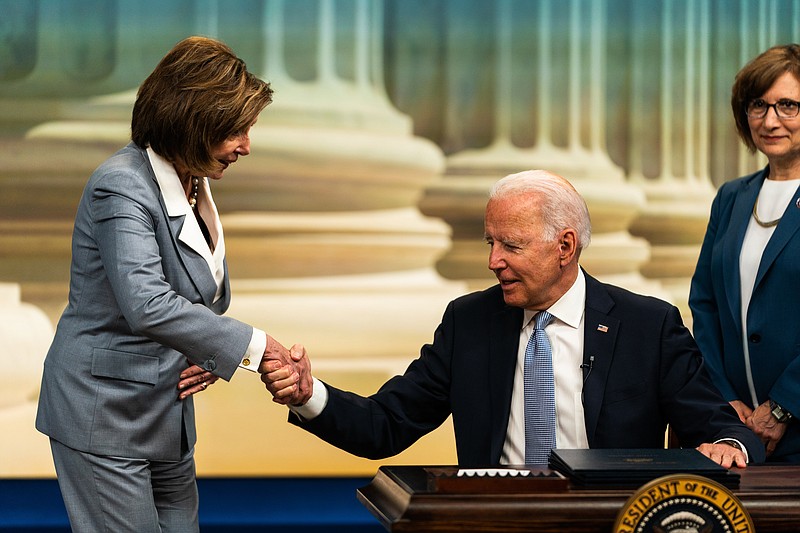WASHINGTON -- The federal deficit will hit $3 trillion in 2021 for the second-consecutive year, primarily because of the national spending blitz in response to the coronavirus pandemic, the Congressional Budget Office said Thursday.
The deficit represents a slight decrease from last year but is triple that of 2019, and amounts to one of the biggest imbalances between federal spending and revenue in American history, the nonpartisan budget office said. But the office also projected faster-than-expected economic growth, with unemployment falling more sharply than previously predicted -- a shift cheered by administration officials.
In 2021, the federal government is projected to spend $6.8 trillion -- higher than even last year's total -- while collecting about $3.8 trillion in revenue. Although spending is elevated from last year, the United States will take in more revenue as the pandemic fades and consumers resume normal activities, which is why the overall deficit will shrink modestly.
President Joe Biden's $1.9 trillion stimulus, passed in March, accounts for much of this year's spending imbalance. But that measure is temporary and soon will expire.
The budget office projects the deficit will fall to $1.2 trillion in 2022 before dropping to $800 billion in 2023 and 2024 as pandemic relief measures fade. However, the budget office projects that the deficit will again begin to widen in 2025 and grow steadily for the rest of the decade, approaching $2 trillion by 2031.
"It's more than any other year besides last year, which is in line with what we expect given the American Rescue Plan," said Marc Goldwein, senior vice president at the nonpartisan Committee for a Responsible Federal Budget.
The budget office projects brisk economic growth, with the nation's gross domestic product surging to 7.4% in 2021 before leveling off at a still-robust 3.1% in 2022. It also projects the unemployment rate falling to 3.8% next year.
The forecast calls for a sharp rise in inflation, close to 3% in 2021, then falling to about 2% by next year and remaining around that level through 2025 at its pre-pandemic rate. The drop is in line with expectations from the Federal Reserve and the Biden administration.
Democrats and many economists have said the pandemic relief spending was important to ensure avoiding a repeat of the slow economic growth that characterized the recovery from the last recession. Interest rates have remained low, which makes federal borrowing cheap.
"If there's one thing we should have learned from the last 10 years, it's that fears of government debt have been greatly exaggerated," said J.W. Mason, professor of economics at the City University of New York. "In the U.S. and other rich countries, we have seen historically high debt levels with none of the negative consequences that they were expected to bring."
However, Brian Riedl, a budget expert at the libertarian-leaning Manhattan Institute, said lawmakers must act to lower the national debt, particularly because a spike in interest rates could cause federal spending to soar.
"This report reemphasizes that the debt is growing at an unsustainable pace," Riedl said.

